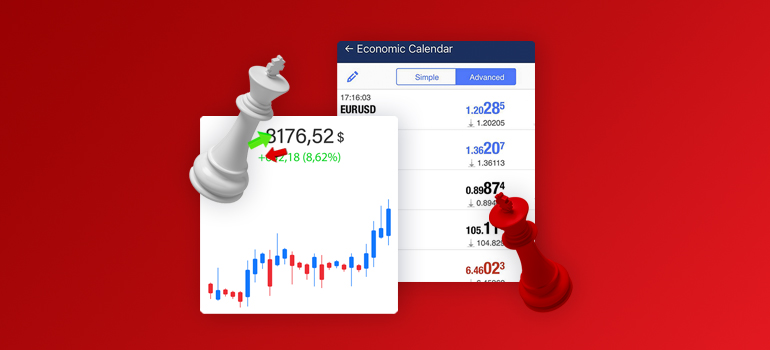Whether you’re new to trading or a professional trader, using a forex trading strategy to minimise risk and maximise your profits is essential. In this article, we’ll look at a few trading strategies that global traders use.
What is a forex trading strategy?
Forex trading strategies, or trading styles, are techniques used by forex traders to determine whether to buy or sell a currency pair at any given time. Strategies can be based on technical or fundamental analysis, or other news-based events. The strategy is usually made up of trading signals that trigger buy or sell decisions. Trading strategies help traders to incorporate consistency instead of trading just on impulse or emotion, and they also help to measure performance and trading outcomes.

Trading style
To build a trading strategy, first you need to identify what type of forex trader you are. Every trader has a unique style, temperament, risk tolerance, and personality. A forex trader’s trading style is influenced by lots of different factors, including how much time they have available to trade, their preferred method of analysis (technical or fundamental), or how risk averse they are.
Different types of forex trading strategies
There are a variety of trading strategies, and as already mentioned, these are a vital part of live trading. Let’s take a look at some of the main forex trading strategies.
Forex scalping strategy
Forex scalping is used by day traders and involves opening multiple small, short-term trades, varying from just a few seconds to minutes. A forex scalper aims to make a large number of trades and take advantage of the small price movements throughout the day. Like all styles of trading, forex scalping has its risks too. Leverage, spreads, fees, and slippage are all risks that the trader needs to control, manage, and account for as much as possible.
Day trading strategy
Day traders usually look to make gains from an instrument’s short-term price movements. These profits can add up considerably during the course of the day. The essential and most critical rule of day trading is that the trader closes all positions at the end of the trading day. Day traders usually use technical analysis, and fundamental analysis if required.
Swing trading strategy
Swing trading is a trading style that tends to hold a position for a few hours, days or more. The aim is to profit from speculated price movements, buying low and selling high (or vice versa). Swing traders mainly use technical analysis, and they may apply fundamental analysis as well. Swing trading exposes a trader to overnight and weekend risk where the price could gap and open the following session at a significantly different price.
Trend trading strategy
Trend trading is a trading style based on analysing the direction of trends to identify trading opportunities. It is designed to take advantage of uptrends or downtrends. Rising prices usually reflect an uptrend whereas falling prices typically indicate a downtrend. In addition to looking at highs and lows, trend traders use other tools such as trendlines, moving averages, and technical indicators to identify the trend direction.
Position trading strategy
Position trading is a popular long-term trading strategy that allows investors to hold a position for a long period of time in the expectation that the investment will go up in value. Position traders are less concerned with short-term price movements and prefer to rely on more precise fundamental analysis and long-term trends. Position traders are trend followers. They believe that once a trend starts, it will likely continue for some time. Position traders identify a trend and an investment that will benefit from this trend, then buy and hold the investment until the trend peaks.
Algorithmic trading strategy
Algorithmic trading strategies is where the execution of orders is automated through programmed trading instructions. These instructions are lines of code that detail instructions on when to buy and sell and may include chart analysis, volatility analysis, price arbitrage analysis or just trend following price movements. Algorithmic trading attempts to remove emotions from trades, ensuring trades are executed efficiently and placed instantaneously.
Event driven trading strategy
An event-driven strategy is a type of strategy that attempts to profit from a stock mispricing that may occur during or after a corporate event. Investors, who use an event-driven strategy, have teams of specialists who analyse corporate actions before recommending action. Some examples of corporate events include mergers and acquisitions, regulatory changes, and earnings calls.

Risk management
An important component of a forex trading strategy is risk management. Forex trading is risky and managing risk is key to reducing large losses. A risk management plan allows you to implement a set of rules and measures to minimise the impact of negative circumstances that may affect a forex trade. These rules include stop-loss orders that automatically close trading positions (to limit losses) when they reach a certain price level. Also, there are take-profit orders that close your trading positions when a price reaches a certain profit level. Risk management also considers the risks associated with leverage. Leverage offers a trader the opportunity to maximise profits, but it also exposes them to huge losses if not managed effectively.
Manage your strategy with a solid forex education
A successful forex trading strategy also integrates the trader’s knowledge and understanding of the forex market. Regardless of your level of trading experience, forex learning never stops. This means you should continue to enhance your learning by reading all forex-related resources such as e-books, articles, and guides. Watch as many videos as possible or join webinars on forex related topics to learn useful tips. Also, make sure you analyse past and current charts often and stay up to date with global economic and political news, and unexpected market fluctuations. In addition, study technical and fundamental analysis in detail.
Open a demo account to practise your forex trading strategy
Open a demo account to practise your trading strategy with a trusted forex broker like IronFX. You’ll also gain trading experience in a live trading environment and put technical or fundamental analysis to use, without risking real money.
DISCLAIMER: This information is not considered as investment advice or an investment recommendation, but is instead a marketing communication.
